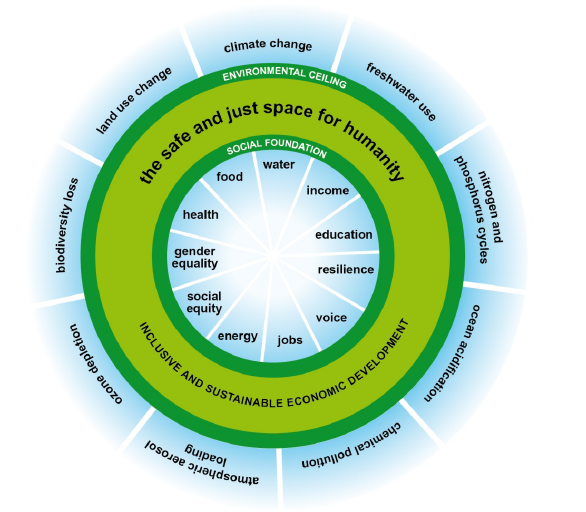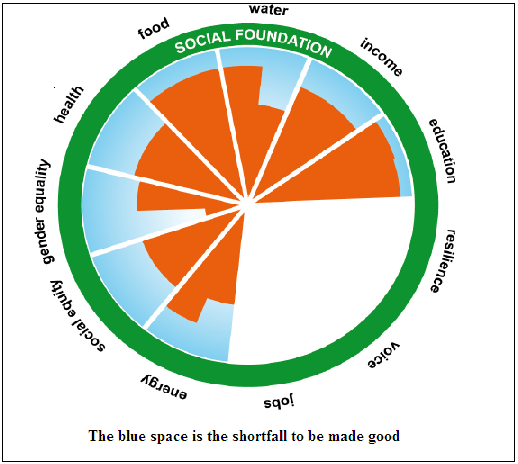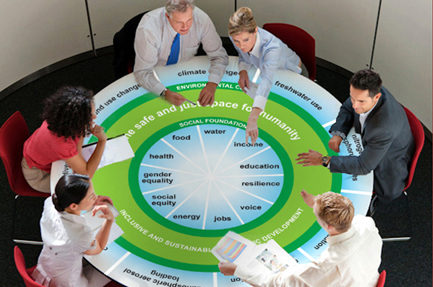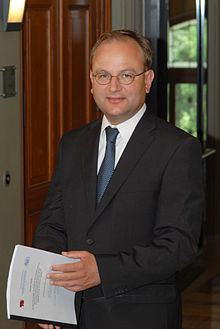Social engineering is being seen as the way environment scientists could get a hold on climate change, says S.Ananthanarayanan.
Defining global boundaries, or physical limits which it was dangerous for the earth to cross, helped fix the specific parameters that needed to be controlled – and gave shape to what nations need to do to contain global warming. It is now widely realized that these goals cannot be attained while social inequality persists. The recent IARU Congress at Copenhagen forcefully brought home the “need to expand the concept of sustainability beyond the physical sciences”. “Is it not time we developed a concept of social tipping points?” a business leader asked during the opening session of the Congress.
Tipping points
In mechanics, a tipping point is when a state of equilibrium, like a glass of water leaning to one side as the table is tilted, suddenly changes, with the glass of water toppling over, when the table is tilted beyond a point. Till that point is reached, the glass can be righted by reducing the tilt of the table, But not after the tipping point. There has been much research into how far physical properties, like the salinity of a water body, or the number of animals in a forest area can rise or fall, after which there cannot be a recovery. And considering the globe as a whole, the Stockholm Resilience Centre had put forward in 2009 the idea of planetary boundaries, or the levels beyond which the planet could not sustain increase in nine specific parameters.
While climate change had been accepted as grave reality, the community of nations had not defined specifically what they needed to do as measures to slow down the effect that human activity had on the environment. The publication of planetary boundaries became a graphic statement of what had to be done and the document has proved useful in fine-tuning what the response of industry and society has to be. But even after the goals were defined, a path of action has not developed and the world is not much better off in containing the indicators of environmental degradation, despite good intentions of international conventions.
In developed countries, goals like reduction of CO2 emission are being apparently met, but this is by moving the manufacture of many consumer things to other places. And in many parts of the underdeveloped world, opportunity to manufacture for the rest of the world is seen as means to ‘development’ and increasingly non-sustainable living is becoming inevitable. China is the leader and India is striving to follow suit. And in the extremely deprived parts of the world, again, drivers for survival are so urgent, that measures to preserve the environment or even to adapt to inescapable climate changes are found politically and socially impractical.
In 2012, OXFAM, the international agency that fights poverty and hunger, published a paper called ‘A safe and just space for humanity’, by Kate Raworth, where the author responded to the ceiling levels set by planetary boundaries, with a set of floor level criteria, under eleven heads, as a social threshold. The space, or the doughnut, between the maximum environmental pressure and the minimum social needs, was the space within which humanity could operate with social inclusiveness and environmental sustainability. A set of social tipping points, as it were.

The challenge
While the challenge, on the physical side, is to stay within limits – and in three cases, biodiversity loss, climate change and nitrogen use we have breached the limits – in the social dimensions, we need to attain the base levels. “Deep inequalities of income, gender, and power mean that millions of people are living below every dimension of the social foundation. Nearly 900m people face hunger; 1.4 billion live on less than $1.25 a day, and 2.7 billion have no access to clean cooking facilities,” says the paper. These disadvantages need to speedily remedied, and doing so would have negligible effect on the environment, the papers says:
Food: Providing the additional calories needed by the 13 per cent of the world’s population facing hunger would require just 1 per cent of the current global food supply.
Energy: Bringing electricity to the 19 per cent of the world’s population who currently lack it could be achieved with less than a 1 per cent increase in global CO2 emissions.
Income: Ending income poverty for the 21 per cent of the global population who live on less than $1.25 a day would require just 0.2 per cent of global income.
In fact, the biggest source of planetary-boundary stress today is excessive resource consumption by roughly the wealthiest 10 per cent of the world’s population, and the production patterns of the companies producing the goods and services that they buy, the paper says:
Carbon: Around 50 per cent of global carbon emissions are generated by just 11 per cent of people;
Income: 57 per cent of global income is in the hands of just 10 per cent of people;
Nitrogen: 33 per cent of the world’s sustainable nitrogen budget is used to produce meat for people in the EU – just 7 per cent of the world’s population.

Adding to the pressure created by the world’s wealthiest consumers is a growing global ‘middle class’, aspiring to emulate today’s high-income lifestyles. By 2030, global demand for water is expected to rise by 30 per cent, and demand for food and energy both by 50 per cent. In addition, the inefficiency with which natural resources are currently used to meet human needs – for example through wasted food, leaky irrigation, fuel inefficient vehicles – further compounds the pressure, the paper says.
Integrated approachHeading
The significant point the paper makes is that the environment and social stresses are not viewed as ‘externalities’, but as the ceiling and the floor that form the guide rails for economic activity. The objective is no longer economic growth alone, but steering humanity into the safe and just place and then to maximize well being within that space. The OXFAM report stresses that ensuring social justice may be just as essential as physical sustainability, in the developed world, for containing warming. Poverty has the effect, through inefficient use of resources, like burning biomass as cooking fuel, of increasing environmental stress. And the effects of climate change would rapidly multiply the numbers that live in this way, leading to a spiral.

Global forums have begun to stress that it is in the interest of the developed world to work for moving humanity into the just space, and also to re-examine its own way of living, to stay in the safe zone. The Intergovernmental Panel on Climate Change (IPCC) completed its Fifth Assessment Report on Sunday, 2nd Nov 2014, in Copenhagen. “There is no doubt that climate policy has its costs, but it does not cost the Earth to save the planet for our children,” said Ottmar Edenhofer, Chief Economist of the Potsdam Institute for Climate Impact Research and Co-Chair of the IPCC Working Group III ‘Mitigation of Climate Change.’

Do respond to : response@simplescience.in
------------------------------------------------------------------------------------------